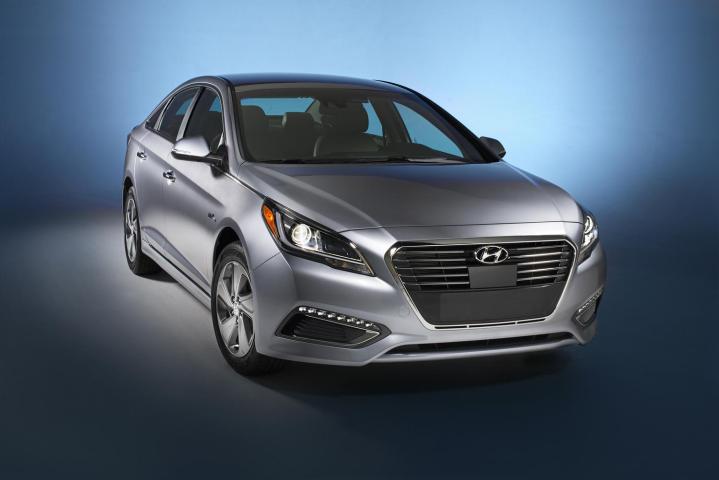
Hyundai credits equipment it calls a Transmission-Mounted Electrical Device, or TMED, for the boost in fuel economy. A 38-kW electric motor and clutch replace the torque converter on the Sonata Hybrid’s 6-speed automatic and bolster output from the 2.0-liter, four-cylinder gas engine. The automaker expects fuel economy of 39 mpg city, 44 mpg highway and 42 mpg combined.
That’s a ten percent boost in combined city/highway fuel economy compared with the previous-generation Sonata Hybrid and easily tops a 28-mpg combined rating for the Sonata SE with a 2.4-liter four-cylinder. The fuel economy gain is less significant compared to the Sonata Eco, though, which uses a 1.6-liter turbocharged engine and dual-clutch transmission to achieve 38 mpg highway and 32 mpg combined.
The gas engine and electric motor in the Sonata Hybrid combine to produce 193 horsepower, more than the conventional Sonata’s peak output of 185 horsepower. The electric motor draws energy from a 1.62-kWh battery pack that’s 13% larger than that of the previous model. Thanks in part to the larger battery and the TMED’s ability to decouple from the gas engine, the 2016 Sonata Hybrid can hit 75 mph solely on electric power.
Hyundai gets high marks for including or offering luxury-grade features in its mainstream models, and the Sonata Hybrid is no different. A backup camera is standard, and features like a navigation system with an 8-inch touchscreen, ventilated front seats, a heating steering wheel, rear side window sunshades and adaptive cruise control are all available.
Automakers may simply be hedging their bets on today’s low gas prices, or perhaps they know something we don’t about the future of fuel costs. Either way, the 2016 Hyundai Sonata is among many fuel-sippers on the floor of the Detroit Auto Show and, with the 2016 Sonata Plug-In Hybrid, not even alone on the Hyundai stand.
Editors' Recommendations
- 2025 Hyundai Tucson Plug-In Hybrid gets improved tech features
- Hyundai Sonata Hybrid’s solar roof can deliver up to 700 miles of ‘free’ driving
- Hyundai’s dreamy hot hatch concepts could spawn a fun-to-drive hybrid
- Lincoln Corsair Grand Touring adds plug-in hybrid power
- Hyundai shocks us with its mid-engined RM19 sports car concept


